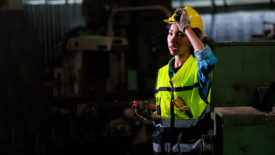Home » Keywords: » heat hazards
Items Tagged with 'heat hazards'
ARTICLES
Best Practices
Is the manufacturing sector prepared for rising heat?
WBGT meters and understanding how to determine risk
September 20, 2023
Technology helps improve worker safety in hot environments
Increasing temperatures raise risk of heat stress
July 13, 2023
Become a Leader in Safety Culture
Build your knowledge with ISHN, covering key safety, health and industrial hygiene news, products, and trends.
JOIN TODAYCopyright ©2024. All Rights Reserved BNP Media.
Design, CMS, Hosting & Web Development :: ePublishing







